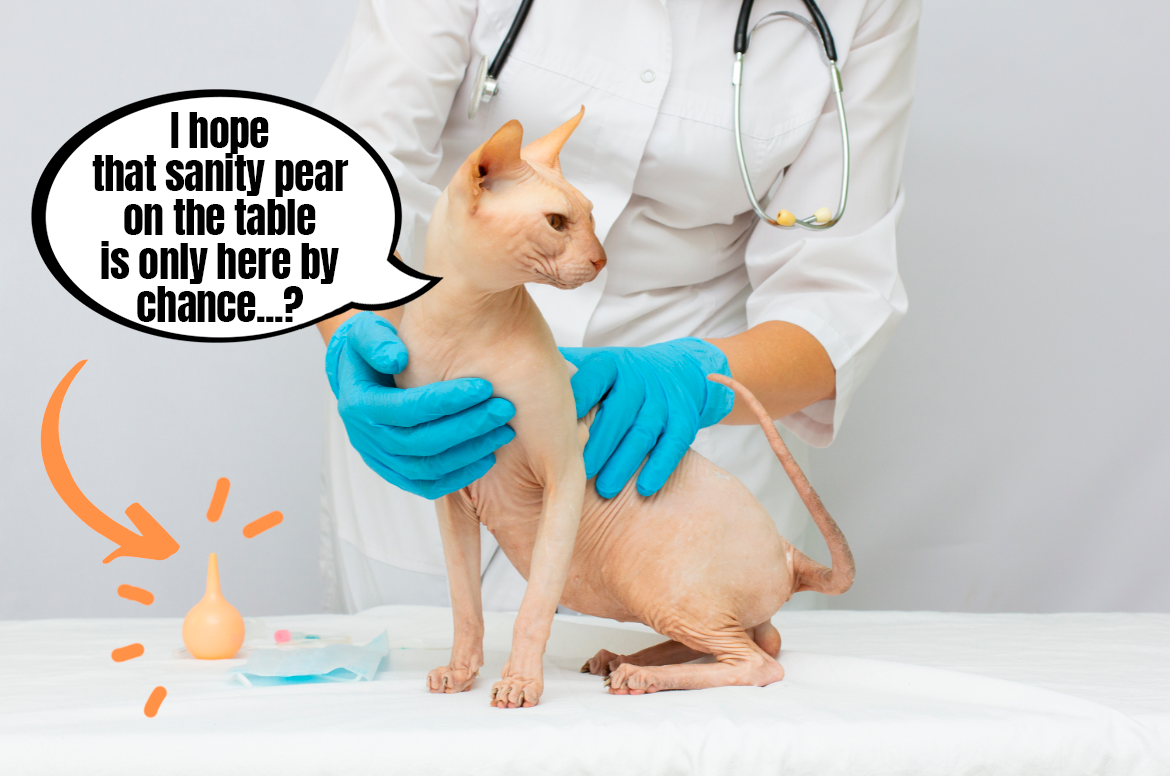When a cat gets sick, the one thing on their Guardian’s mind is to support their small, purring friend while they’re fighting the virus. Vet visits, blood work, various medications – diseases drain your energy and funds, but our pets feeling better is worth every penny. Unfortunately, there are also some common health problems that are difficult or even impossible to treat – among them are FIV, FIP and FeLV. What symptoms can they give and why are they so dangerous for cats? Let’s check together, fabCats.
FIV – feline immunodeficiency virus
FIV is a contagious, untreatable disease found in not just domestic cats, but wild cats like lions, tigers and lynx as well. The disease is often compared to AIDS which is caused by the HIV virus. In both cases, the viruses cause immunosuppression – a massive deficiency in the body’s immune system. And though FIV itself is not deadly, because of the weak immune system, contaging FIV can rapidly increase the risk of other difficult diseases.
The FIV virus is only contagious to cats, which is why both humans and other animals living at the same house as the cat are safe from FIV. The virus can be found mainly in the saliva and blood of a sick cat, so the disease spreads most often when cats fight each other. However, the virus can also be transmitted through cats sharing their food bowls, grooming each other or by a mother giving birth and feeding her kittens.
What are the symptoms of FIV?
A cat can carry FIV but don’t show any symptoms that would worry their Carer for a few months or even years. But it’s not a “one rule fits all” type of situation – while some cats can show little to no symptoms, others will get sick from FIV quickly and with serious health complications.
There are 5 main stages of FIV:
- acute infection, lasting usually for a few weeks and not giving many symptoms, aside from temporary general symptoms like a temperature, diarrhea, and upper respiratory/mouth infections;
- asymptomatic carrying, which is a phase that can last many years and give no symptoms (but the cat can still pass the virus to other cats);
- long-term lymphadenopathy. This stage can last many months and besides the lymph glands being swollen, it usually gives other symptoms like recurring fever, apathy, lack of appetite and weight loss;
- pre-FAIDS stage (Feline Acquired Immunodeficiency Syndrome) makes the cat visibly skinnier and gives more chronic symptoms – diarrhea, gum inflammations, upper respiratory infections, vomiting. Blood tests usually show low white and red blood count;
- FAIDS, which is the last stage usually lasts about a few weeks and is a case mostly for cats who were not treated in the previous stages of the disease.
Though FIV alone is untreatable, with proper care and health management it’s possible to stop the symptoms on a milder stage. The treatment usually includes trying to support the immune system as best as possible while also reducing stress and potential sources of other viruses and health issues. Cats diagnosed with FIV can live many happy years alongside their Guardians as long as proper care and regular health check-ups are provided.
FIP – Feline Infectious Peritonitis
A more crushing diagnosis for cats is FIP, which is caused by the feline coronavirus FCoV. Though the virus itself can be seen in cat populations around the world, not every cat who catches it will get FIP. Unfortunately, once the disease progresses, it brings many risks to a cat’s life and treatment is still not readily available in many parts of the world, which also makes it very expensive and there’s no guarantee of success. But how can domestic cats catch a feline coronavirus?
FIP is mainly an issue in bigger cat groups, where the virus can easily spread from cat to cat. It includes shelters, but also at breeder’s houses, foster homes or private homes with more cats. The virus is mostly transmitted through fecal matter (though it can also be around the places where a sick cat is), which is why cats using one litter box and living in the same space can quickly catch the virus from each other. FIP progresses the fastest for kittens who don’t have a highly developed immune system yet, but generally any cat can get the virus and get sick if there are circumstances for it (poor immunity, stress, meeting a cat who carries the FCoV etc.)
What are the symptoms of FIP?
The typical FIP symptoms may differ depending on the stage of the disease, but also depending on the form of FIP. The most common issues that a cat Guardian can see are temperature, low appetite, rapid weight loss, vomiting and diarrhea, but FIP also causes:
- in the non-effusive (dry) form: convulsions, vomiting, weight loss, jaundice, as well as ocular and neurological issues.
- in the effusive (wet) form: similar to the dry form, but also the characteristic accumulation of fluid within the abdomen or chest.
Cats who suffer from FIP can show all or only some of the symptoms, which is why it is very important to observe your cat and consult any worrying symptoms with a specialist who will be able to make the right diagnosis. There are many diseases and health conditions that can show similar symptoms and only accurate testing can confirm or discard FIP. Currently in Poland there isn’t one, recommended treatment for FIP, but many cat Carers work together in groups and on forums with people abroad who may have access to it in their country.
And what we, as cat Carers, can do to minimise the risk of our cats catching FIP? First of all, let’s remember about regular checkups with the vet that will allow the specialist to find any abnormalities and the right treatment for them quickly. Also, it’s good to keep our houses clean and hygienic – regularly cleaning the litter box, separating litter boxes from food bowls, isolating sick cats from the healthy ones, as well as testing the new cats before they’re introduced to the home group are just a few of the basic steps.
FeLV – the feline leukemia
The last of the diseases we’ll be looking at today is feline leukemia caused by the Feline Leukemia Virus (FeLV). Alongside FIP and FIV, it’s one of the most difficult, untreatable diseases cats can get and, just like the others, it mainly spreads within large cat groups where cats can stumble upon other cat’s saliva, urine, fecal matter or blood. Fortunately, the FeLV virus can live outside the host body for just a few minutes, is highly sensitive to the environmental factors and detergents and in Poland there is a FeLV vaccine that can be administered to cats optionally, especially if they’re outdoors a lot or can meet FeLV+ cats.
Depending on the cat’s health and immune system, their case might be milder or more severe. It does sometimes happen that a cat’s body is strong enough to combat the virus on its own or to just be the carrier without actually getting sick. However, there are also cases where FeLV is much more severe and has tragic consequences.
What are the symptoms of FeLV?
About ⅓ of cats infected with FeLV go through leukemia and a big percentage of them are kittens (who have a naturally lover immunity to different viruses). The symptoms might include apathy, lack of appetite, low body weight, dehydration, anemia and recurring infections, as well as fever and declining immunity which facilitates further infections, causing more specific symptoms in the infected areas.
Feline leukemia is untreatable and the care for and FeLV+ cat is mostly focused on treating the symptoms while also boosting up their immune system to prevent further infections. With the right care and monitoring, cats who are FeLV+ can live a happy and long life with their hoomans.
Toast to the cat health
Cats are masters of hiding their symptoms, which is why every worrying sign we see should be enough of a reason to visit the vet and a motivation to regularly monitor their health. The spring-summer season is ahead and many cat Guardians decide to walk their cats, let them outside or to take a new feline friend into their house. This is a fantastic time to plan a vet visit, do the necessary blood, stool and urine tests and check the cats’ overall health. Some symptoms might be visible only with the right tools and expertise, but diseases can happen to any cat, regardless of their age, breed, background or even the environment they live in.
Today, dear fabCats, we want to make a toast with you to the feline health – our cats are members of our families, we’re with them for the good and the bad, in sickness and in health. Let’s make sure the worst days are few and far in between 🙂




